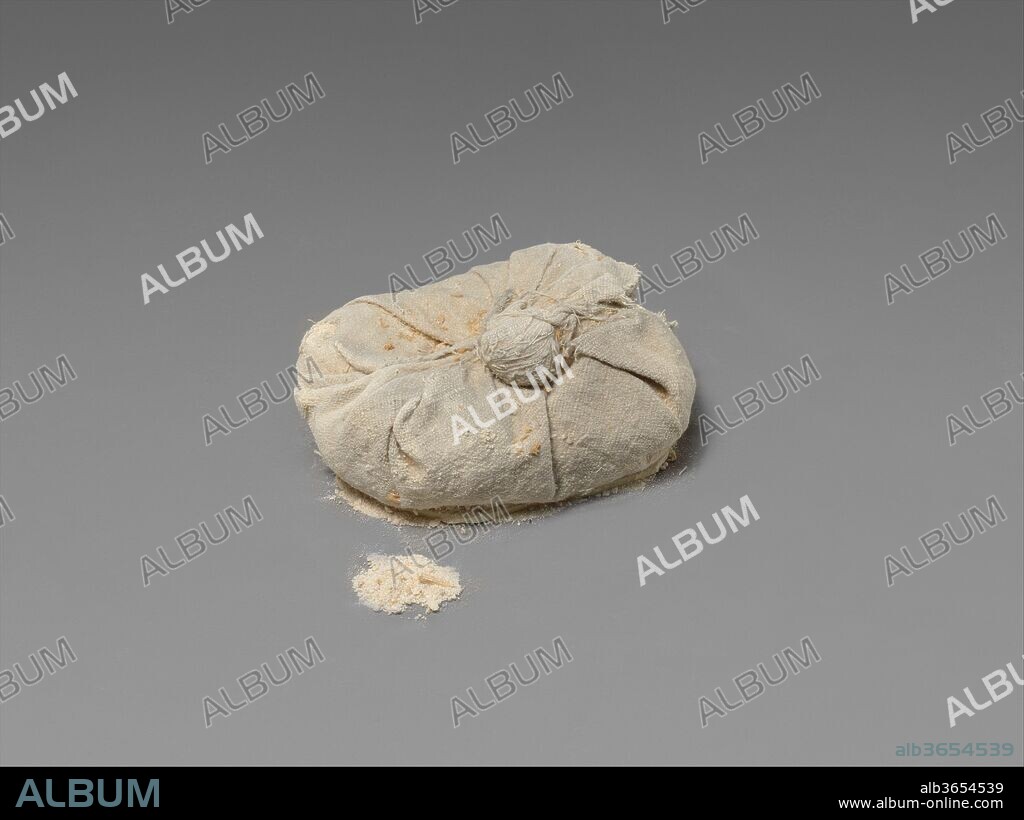alb3654539
Bag of Natron from Tutankhamun's Embalming Cache

|
Zu einem anderen Lightbox hinzufügen |
|
Zu einem anderen Lightbox hinzufügen |



Haben Sie bereits ein Konto? Anmelden
Sie haben kein Konto? Registrieren
Dieses Bild kaufen

Titel:
Bag of Natron from Tutankhamun's Embalming Cache
Untertitel:
Siehe automatische Übersetzung
Bag of Natron from Tutankhamun's Embalming Cache. Dimensions: L. 8.5 cm (3 3/8 in.); W. 6.6 cm (2 5/8 in.); H. 3.6 cm (1 7/16 in.). Dynasty: Dynasty 18. Reign: reign of Tutankhamun. Date: ca. 1336-1327 B.C..
In December 1907 Theodore M. Davis, a wealthy American who was funding excavations in the Valley of the Kings, discovered a small pit near the tomb of Seti I. Inside the pit were approximately a dozen large sealed whitewashed storage jars (09.184.1). Among other things, the jars contained bags of natron (a kind of salt), pieces of linen with hieratic inscriptions dated to Years 6 and 8 of a king named Tutankhamun (throne name Nebkheperure). At the time, almost nothing was know about Tutankhamun, and Davis declared that he had discovered the king's tomb.
Davis received a number of the jars and their contents in the division of finds and, in 1909, he gave most of his share to the Metropolitan Museum. It was only later that Herbert Winlock, the field director of the Museum's excavations at Thebes, realized that the natron and linen were embalming refuse from the mummification of Tutankhamun.
Natron, a naturally occurring salt found in the Wadi el-Natrun which is located in the desert west of the Nile Delta. It was used as a dessicant in the mummification process. Tubular bags (1988.437.1) and small sacks (1988.437.2) of unused natron were found in the storage jars from Tutankhamun's embalming cache.
Technik/Material:
Linen, natron
Zeitraum:
New Kingdom, Amarna Period
Museum:
Metropolitan Museum of Art, New York, USA
Bildnachweis:
Album / Metropolitan Museum of Art, NY
Freigaben (Releases):
Model: Nein - Eigentum: Nein
Rechtefragen?
Rechtefragen?
Bildgröße:
4304 x 3224 px | 39.7 MB
Druckgröße:
36.4 x 27.3 cm | 14.3 x 10.7 in (300 dpi)
 Pinterest
Pinterest Twitter
Twitter Facebook
Facebook Link kopieren
Link kopieren Email
Email
